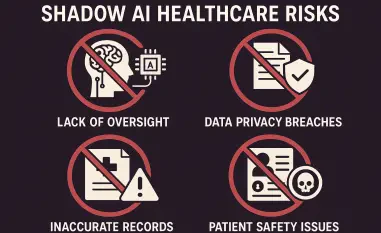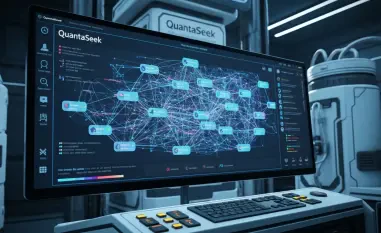Introduction to Endpoint Security Challenges
In an era where cyber threats evolve at an alarming pace, endpoint security stands as a critical line of defense for enterprises worldwide, particularly for systems running on Windows, the most widely used operating system in corporate environments. Imagine a scenario where a trusted security tool, designed to shield millions of devices, harbors hidden flaws that could disrupt system stability or even impair its own protective capabilities. This possibility raises pressing questions about the reliability of such solutions in safeguarding sensitive data. As cyber attackers grow more sophisticated, vulnerabilities in leading platforms like CrowdStrike Falcon can send ripples through the industry, prompting a deeper examination of how even medium-severity issues might impact organizational security. This report delves into recent discoveries of flaws in Falcon Sensor for Windows, exploring their implications and the broader landscape of endpoint protection.
Understanding CrowdStrike Falcon and Its Role in Windows Security
CrowdStrike Falcon has emerged as a cornerstone in endpoint protection, offering advanced threat detection and response capabilities tailored for Windows systems, which dominate enterprise IT infrastructures. Recognized as a leader in the cybersecurity market, Falcon integrates cloud-native technology with artificial intelligence to provide real-time monitoring and incident response. Its widespread adoption among Fortune 500 companies underscores its pivotal role in defending against ransomware, malware, and other sophisticated attacks that target endpoint devices.
The platform’s significance extends beyond mere protection, as it helps organizations maintain compliance with stringent regulatory standards while minimizing downtime during security incidents. Falcon’s ability to operate across diverse environments, from modern Windows 11 deployments to legacy systems, makes it a versatile choice for businesses of all sizes. Its market presence is bolstered by a reputation for innovation, often setting benchmarks for competitors in the rapidly evolving cybersecurity space.
Key features such as behavioral analysis, automated threat hunting, and seamless integration with other security tools position Falcon as an indispensable asset for enterprise security teams. With a focus on preventing breaches before they escalate, the platform has become synonymous with proactive defense. However, recent revelations about vulnerabilities in its sensor technology highlight the importance of continuous scrutiny, even for industry leaders.
Unveiling the Falcon Sensor Vulnerabilities
Details of CVE-2025-42701 and CVE-2025-42706
Recent disclosures have brought to light two medium-severity vulnerabilities in CrowdStrike Falcon Sensor for Windows, identified as CVE-2025-42701 and CVE-2025-42706, which could potentially allow malicious actors to delete arbitrary files on affected systems. CVE-2025-42701 arises from a Time-of-Check Time-of-Use (TOCTOU) race condition, a flaw that could be exploited during specific timing windows to manipulate file operations. With a CVSS 3.1 score of 5.6, this issue poses a moderate risk under certain conditions.
Meanwhile, CVE-2025-42706 stems from a logic error in origin validation, enabling attackers to bypass intended security checks with a slightly higher CVSS score of 6.5. The potential impact of these flaws includes disruption of system stability or even interference with Falcon’s own security monitoring functions by deleting critical files. Such actions could create openings for further exploitation if leveraged by a determined adversary.
Importantly, both vulnerabilities require the attacker to already possess code execution privileges on the target system, significantly reducing the likelihood of remote exploitation. This prerequisite limits the scope of these flaws to scenarios where a system is already compromised, meaning they cannot be used for initial access. Nevertheless, the ability to escalate impact through file deletion remains a concern for affected environments.
Affected Versions and Scope of Impact
The vulnerabilities affect a specific range of Falcon Sensor versions for Windows, spanning from 7.24 to 7.28, as well as earlier builds, including those running on legacy systems like Windows 7 and Windows Server 2008 R2. Specific impacted versions include 7.28.20006, 7.27.19907, 7.26.19811, 7.25.19706, 7.24.19607, and for older systems, 7.16.18635 and prior. This broad range underscores the challenge of maintaining security across varied IT landscapes.
Notably, Falcon Sensors deployed on macOS and Linux platforms remain unaffected by these issues, narrowing the scope of concern to Windows-based environments. The CVSS scores of 5.6 and 6.5 reflect a medium level of severity, indicating that while the risk is not catastrophic, it warrants prompt attention from system administrators. The potential for system disruption or impaired security tools amplifies the need for swift action.
Data suggests that organizations with diverse or outdated Windows deployments face a higher exposure to these risks, particularly those unable to upgrade immediately. The focus on Windows systems also highlights the operating system’s prominence as a target for cyber threats, given its extensive use in enterprise settings. Addressing these vulnerabilities becomes a priority to prevent localized issues from escalating into broader security incidents.
Challenges Posed by Falcon Sensor Flaws
The discovery of these vulnerabilities introduces tangible risks, particularly the possibility of arbitrary file deletion leading to system instability or the malfunction of critical security tools. If exploited, such actions could render systems vulnerable to subsequent attacks by disabling protective mechanisms. This scenario poses a significant concern for businesses reliant on Falcon for continuous threat monitoring and response.
Managing updates across heterogeneous enterprise environments presents another hurdle, as organizations often operate a mix of modern and legacy Windows versions. Ensuring compatibility and stability during patch deployment can be resource-intensive, especially for firms with limited IT staff or complex infrastructures. Delays in applying fixes could leave systems exposed for extended periods, heightening the risk of exploitation in already compromised environments.
For organizations maintaining older systems like Windows 7, mitigation challenges are even more pronounced due to limited support and compatibility constraints. Timely patch deployment becomes a logistical puzzle, requiring careful planning to avoid operational disruptions. Balancing security needs with operational continuity remains a persistent struggle, emphasizing the importance of strategic update management in mitigating these flaws.
CrowdStrike’s Response and Mitigation Strategies
CrowdStrike demonstrated a proactive stance by identifying these vulnerabilities through internal security posture management and its bug bounty program, which encourages ethical researchers to uncover potential weaknesses. This approach reflects a commitment to transparency and continuous improvement in product security. By detecting the issues before external exploitation, the company gained valuable time to develop and deploy effective solutions.
Patches have been released in version 7.29 of the Falcon Sensor, fully addressing both vulnerabilities for users able to upgrade to the latest build. Additionally, hotfixes are available for earlier versions, such as 7.28.20008, 7.27.19909, 7.26.19813, 7.25.19707, 7.24.19608, and a tailored fix (7.16.18637) for legacy systems like Windows 7. These updates ensure that organizations across various deployment scenarios can secure their environments without needing to overhaul existing setups.
To further support customers, CrowdStrike has provided tools and queries to identify impacted hosts within their networks, facilitating targeted remediation efforts. Active threat monitoring by the company’s intelligence teams has detected no exploitation attempts in the wild, offering reassurance about the current state of risk. This comprehensive response underscores a dedication to minimizing customer exposure while maintaining trust in the platform’s reliability.
Future Implications for Endpoint Security
These vulnerabilities shed light on broader challenges within endpoint security, where even trusted solutions can harbor flaws that threaten system integrity. The incident serves as a reminder of the critical need for robust vulnerability management practices, including regular audits and swift response mechanisms. As cyber threats grow in complexity, such events highlight gaps that must be addressed to maintain defensive resilience.
Emerging trends in cybersecurity point toward a heightened emphasis on internal detection capabilities and rapid patch deployment strategies to counter evolving risks. Organizations are increasingly expected to adopt proactive measures, such as continuous monitoring and automated update systems, to stay ahead of potential exploits. This shift reflects a growing recognition that reactive approaches are insufficient in today’s threat landscape.
Looking ahead, the evolution of attack techniques will likely drive further innovation in sensor technology, with a focus on eliminating exploitable conditions like race conditions or validation errors. Endpoint protection platforms must adapt by integrating more resilient design principles and leveraging advanced testing methodologies. Sustained investment in research and development will be essential to fortify defenses against tomorrow’s challenges.
Reflections and Path Forward
Looking back, the identification of medium-severity vulnerabilities in CrowdStrike Falcon Sensor for Windows served as a critical wake-up call for the cybersecurity community, spotlighting the potential for file deletion to disrupt systems despite the limited scope of exploitation. CrowdStrike’s handling of the situation, through internal discovery and the timely release of patches, set a benchmark for responsible vulnerability management. The absence of detected exploitation in real-world scenarios provided some relief, yet the incident underscored the ever-present need for vigilance.
As a next step, organizations were encouraged to prioritize updates to patched versions like 7.29 or applicable hotfixes, ensuring that all Windows hosts, including legacy setups, were protected. Beyond immediate remediation, adopting a forward-thinking approach by investing in automated patch management systems emerged as a vital consideration. This strategy could streamline future responses to similar issues, reducing exposure windows.
Moreover, fostering a culture of continuous security assessment and collaboration with vendors like CrowdStrike became a recommended path to enhance overall resilience. By staying informed about advisories and participating in threat intelligence sharing, enterprises could better anticipate risks. These actionable measures laid the groundwork for stronger endpoint security, equipping businesses to navigate an increasingly hostile digital environment with confidence.













